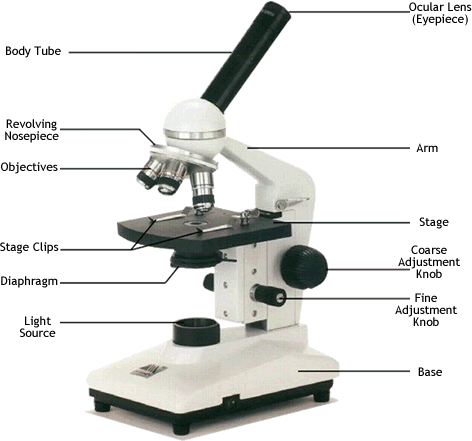Transmission Electron Microscope (TEM)
-very expensive with 2 million times magnification
– specimen must be cut very thinly and must be dead
Scanning Electron Microscope (SEM)
– produces a 3-D image of the surface
– whole specimen must be dead
Compound Microscope – the one we use
– two lenses illuminated by a light source
– specimen can be alive or dead
MAGNIFICATION: how many times bigger an object seems
RESOLUTION: How much detail can be seen
FIELD OF VIEW: Circular area you see illuminated
MICROSCOPE CALCULATIONS:
Allows a biologist to determine the actual size of specimen
1. TOTAL MAGNIFICATION (MAG)
Two lenses: Ocular __________
Objective lenses: Low_______ Med_______ High_______
Total MAG = MAG of ocular x MAG of objective
| Objective | low | med | high |
| Ocular | |||
| Objective | |||
| Total MAG |
2. FIELD OF VIEW (FOV)
– As magnification increases the FOV decreases
– essential you are blowing up part of the FOV
– FOV can be measured with a ruler on low power and calculated for medium and high powers

